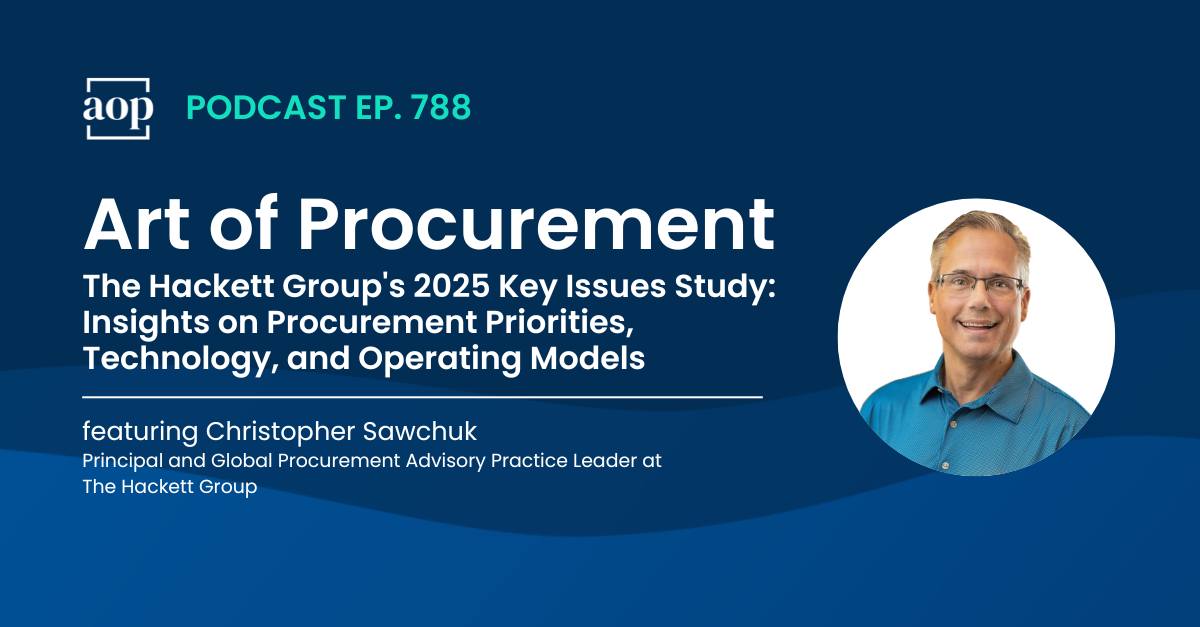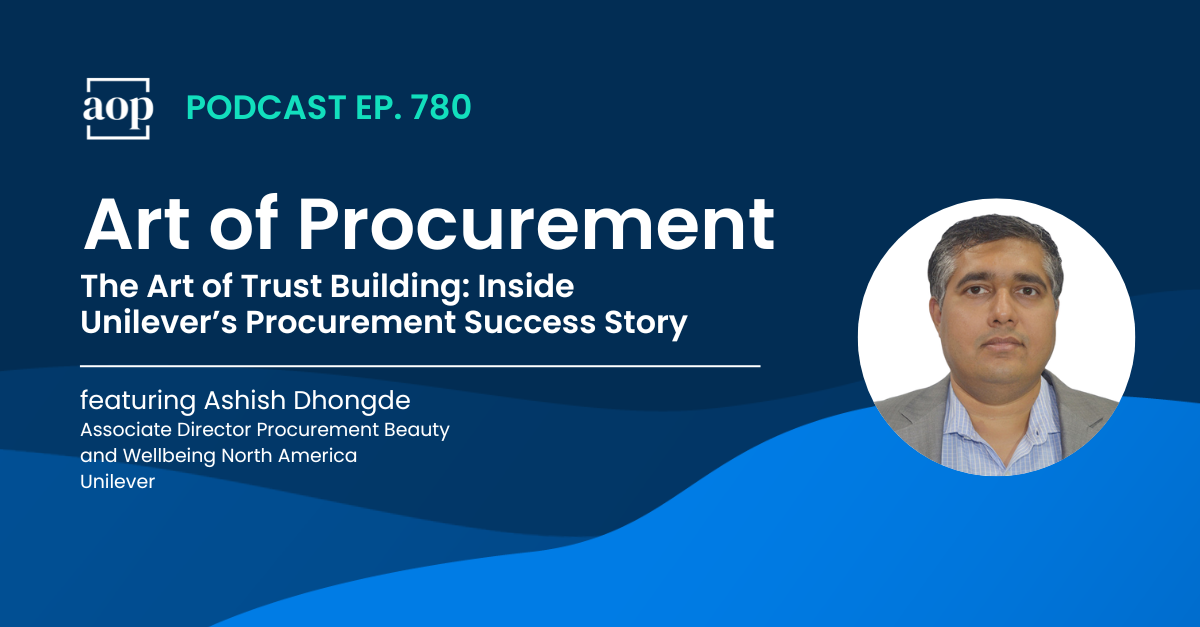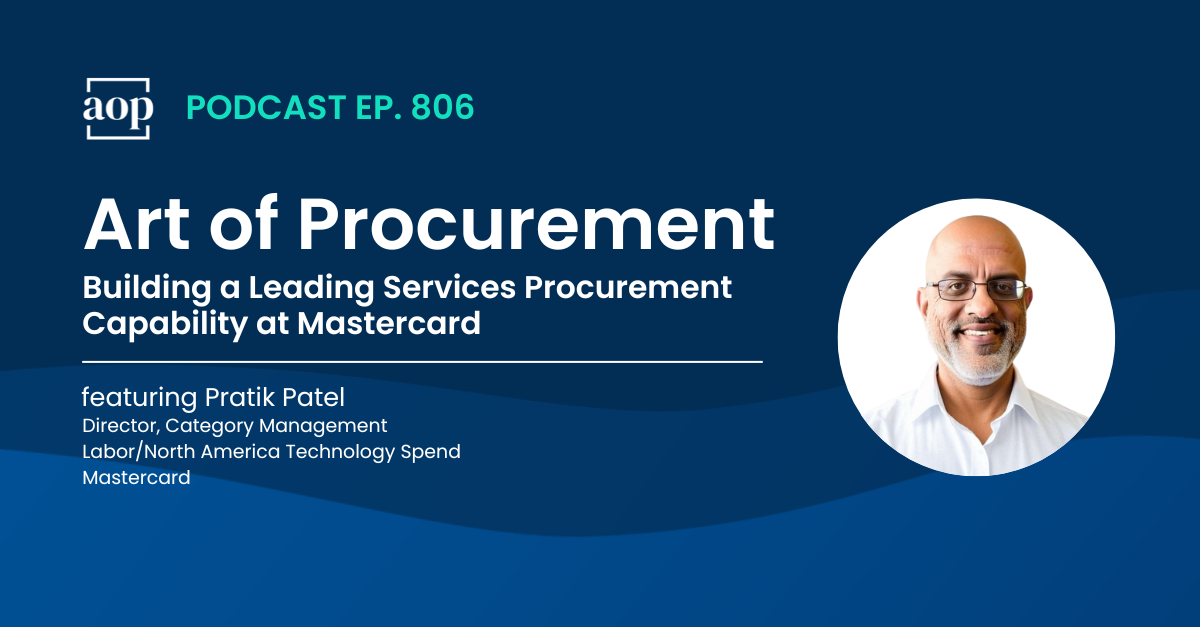3 min read
The Hackett Group's 2025 Key Issues Study: Insights on Procurement Priorities, Technology, and Operating Models
Philip Ideson : March 23, 2025

“We are seeing a labor-for-technology swap as organizations become much more dependent and scalable, and what's driving that scale and that productivity is technology.” – Christopher Sawchuk, Principal and Global Procurement Advisory Practice Leader at The Hackett Group
Procurement has weathered many changes over the last few decades, evolving from a purely transactional function focused on cost reduction to a strategic business enabler that drives enterprise-wide value.
This shift in purpose, expectations, and operating models has accelerated dramatically in recent years, especially after the pandemic exposed critical vulnerabilities in our global supply chains, sending procurement straight into the c-suite.
In this episode of the Art of Procurement podcast, I speak with Christopher Sawchuk, Principal and Global Procurement Advisory Practice Leader at The Hackett Group. Chris has spent over 25 years studying the ups and downs of all these changes in procurement and in business, advising procurement leaders across industries.
Drawing on insights from The Hackett Group's 2025 Key Issues Report, Chris shares his perspective on how procurement's priorities are shifting to reflect our new realities and also how leaders are responding to increasing demands with innovative approaches to technology and operating models.
Here, in Chris's own words, are some highlights from our conversation:
The Evolution of Procurement
"If you went back to the beginning of my career... We were in a situation where I recall sitting down with leaders within companies, CFOs, trying to convince them that not only was saving the money through third-party spend a good thing... If you fast forward to today, you don't have to convince anybody in organizations about the power of supply management and procurement."
How the Pandemic Elevated Procurement
"Going into [the pandemic], in many ways I describe the environment as a false sense of security that we had in our supply chains. And when we went through the pandemic, we were faced with disruptions that we had never really encountered previously at the scale by which they were introduced... You found supply management executives being pulled into not only executive committee meetings, but more specifically into board-level meetings."
A Look Back at Procurement’s Value Prop
"We introduced it almost 20 years ago, and at the time we called it the evolving value proposition of procurement. When we originally designed it, it was a pyramid... At the base of that pyramid was what we called supply assurance, getting the right stuff to the right place at the right time... The second stage was around cost... The third phase is once we've established the fact that we can deliver significant cost reductions to our organizations, the question is how else can we use supply to create advantage?"
The Technology-Labor Swap
"What you're seeing is organizations are becoming much more dependent and much more scalable, and what's driving that scale and that productivity is technology... We have a 10 percent increase in workload versus a one percent increase in staffing, and so we have this gap that has to be satisfied... What we are willing to do, and I would say across the enterprise it's not just a supply management procurement type of situation, is invest in technology."
The Operating Model Imperative
"Last year [procurement’s operating model] was number five as a top priority for supply management organizations, this year it's number three, and so it's a significant priority. What's driving that? I think there's a lot of different factors... One has been to really drive more agility into our organizations. We live in a very volatile world."
The Speed Factor
"Speed has a lot to do with the experience that a company creates. A great example is Amazon and the experience they've created for so many different folks out there with the speed of delivery. Well, the same thing is affecting us internally in companies as well... The focus on experience and much of that experience being the speed by which you can actually do something for me."
What the Data Reveals About AI’s Impact
"In one of our white papers, we looked at the impact of AI on procurement activity. We saw an impact of around 48 percent of the activity that is being done today, which would be basically impacted and go away because it would be done by the technology. That's significant; it’s basically 50 percent of our activity."
Critical Capability Gaps
"When you look at the capabilities that were most commonly cited across the entire population... Number one being focused on data, number two being focusing on talent... It was comforting to me because when I always looked at the top two... foundational to [AI] capability is access to data but it is also understanding the type of skills that we need to engage in that environment."
The Relationship Advantage
"During the pandemic, we identified this in some of our research: those organizations that had stronger relationships with their suppliers had a better allocation of supply than those without, and so it made a big performance difference between some of the companies that we were researching in terms of their ability to gain access to supply in a very allocated environment."
As procurement continues to evolve, leaders must focus on building the right capabilities – particularly around data and talent – while redesigning their operating models to meet new realities, expectations, and technologies. The organizations that succeed will be those that can effectively balance this efficiency and transformation with strategic value creation as the world around them becomes increasingly volatile and complex.


.png)

